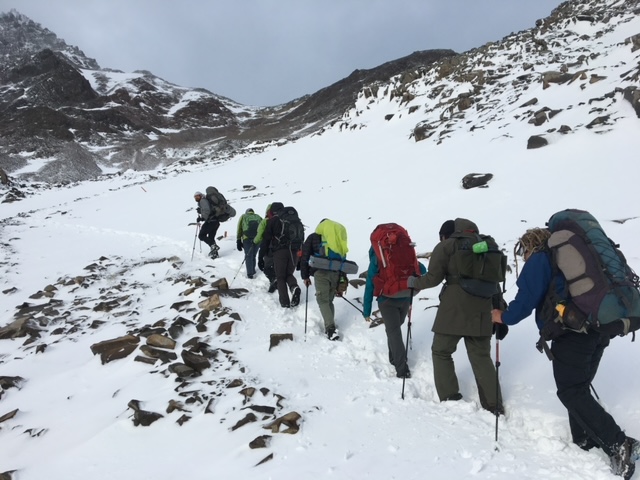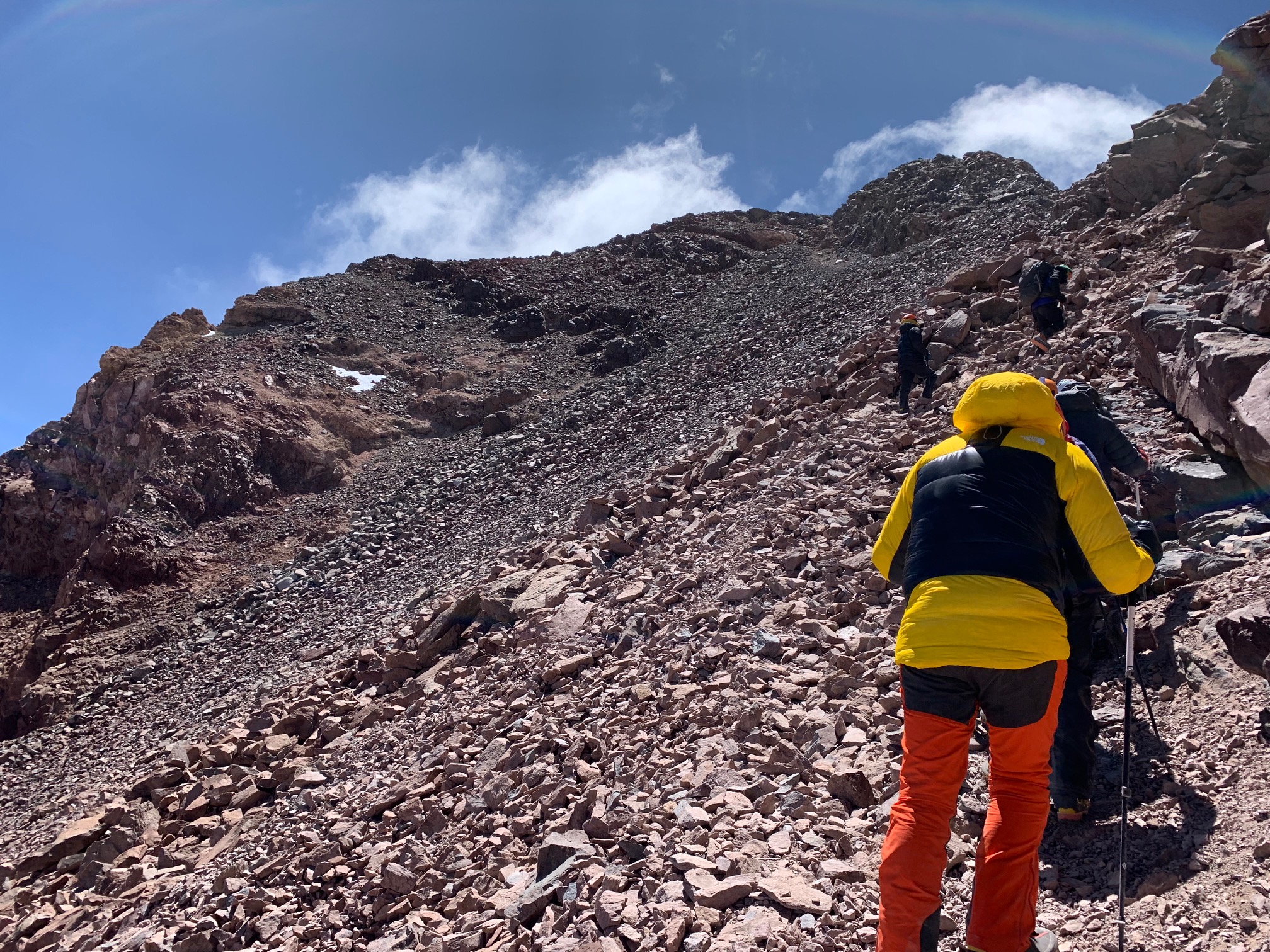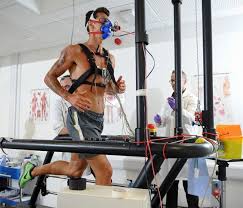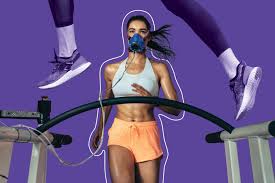Yes, Vo2 Max testing for trekking and Mountaineering trips is important. If you are going on a trip that requires multi-day trekking or joining a mountaineering expedition you should consider getting a Vo2 Max test. Check out the Fast Lab in Denver Colorado.
What is a Vo2 Max Test
VO2 max, or maximal oxygen consumption, refers to the maximum amount of oxygen that an individual can utilize during intense or maximal exercise. This measurement is generally considered the best indicator of cardiovascular fitness and aerobic endurance.
The Benefits of Doing a Vo2 Max Test
Undertaking a vo2 max test will offer you an accurate measurement of current fitness. It will also offer you the ability to design a more effective training program and evaluation of effectiveness of training programs.
If you are thinking of taking on big mountain expedition you really need to consider doing this test to help you formulate the correct heart rate zones to be training in.
Here is an example of a recent test done for one of our Aconcagua clients.
Client
Male (52)
Healthy recreational mountaineer
Height 5ft 4in
Current Weight 154 lbs
Goals: Establish baseline and conditioning goals to accomplish high mountain climbing
The Test
VO2 max test using a PNOE cardiometabolic analyzer. Breath by breath test,
monitoring of physiologic response to exercise following a modified protocol on a
generic treadmill with the addition of lactate testing.
Date: 07/05/2023
Time: 3:00pm
Temperature 62 degrees F inside controlled
Humidity of about 54%
Indoors adequately ventilated environment with fans
Heart Rate: 76 bpm pre-test, Respiratory rate 14 breaths per min
The client comes in rested following our pretest protocol.
Test Description
3-minute calibration and basal measurements at 3.5 mph and incline of 2%
The test began at 4 mph and an incline of 2%. Each stage had a slope increase of 1%
every 3 minutes until fatigue or maximal effort on Borg self-selected scale.
Lactate measurements were taken in the last 30s of each stage.
Recovery measurements for 2:30 minutes (additional time required to monitor lactate
clearance).
Test Results
Test time: 34:28 minutes testing PLUS recovery
Max Heart Rate achieved: 173 bpm
This is NOT your true physiological max HR. We did not see the HR stabilize at the
perceived maximal effort.
Recovery Heart Rate 1 min after the end of the test: 152 bpm (21 bpm below max).
Cardiovascular Fitness and VO2peak
Your VO2 peak was measured at 57.8 ml/min/kg which is SUPERIOR for your age and
conditioning, you are in the top 1% for your age group.
By definition, VO2peak is the measured value closest to the maximum level at which
your heart, lungs, and muscles can effectively use oxygen. This value shows your
cardiopulmonary fitness level is in outstanding condition and well adapted to exercise,
aim to maintain this value as it is a determinant of aerobic conditioning and longevity.
Your VO2 pulse, the volume of oxygen consumed with every heartbeat, helps us
determine how your cardiovascular system is performing at different demands.
Your cardiovascular function is efficient between 135 bpm and 146 bpm (5%-7%) and can keep up with the demands through 165 bpm (11%). We measured a drop past 165
bpm, this shows that you should work to develop a better base as well as target some
high end training.
Breathing Coordination and Efficiency
Your respiratory system is good. Your capacity is well within predicted values, meaning
for an athlete of your age and height, you can move the expected volume of air in and
out, showing that you do not have respiratory restrictions.
Your breathing is slightly unstable, but once you settled into the rhythm you were
efficient through your comfortable pace up to 155 bpm. After this point your breathing
frequency surpasses the 31 breaths per minute and as a result of this hyperventilation
your body can not get enough oxygen to sustain the intensity and we saw a drop in the
oxygen availability per breath drop at 157 bpm.
Research has shown respiratory efficiency is a great determinant of performance and
respiratory muscles need to be strengthened just like other muscles and you need to
condition them at high breathing speeds.
Respiratory Exchange Ratio (RER)
This measurement shows how much of the energy you use during exercise results from
fat and carbohydrate oxidation and the ratio of the oxygen and carbon dioxide
interchange. This tells us a lot about how your metabolism and fueling systems work in
relation to a given effort. Your diet, lifestyle, and timing for exercise and nutrient intake
have a big impact on your substrate usage.
It is good to have a body that oxidizes more fats at lower to moderate intensities to
spare limited carbohydrates and to avoid the need to fuel so often. Your mean value of
0.87 reflects a system that, for the majority of the time during moderate-intensity
exercise, relies heavily on carbohydrates for fuel.
Your test shows that your metabolic flexibility needs improvement as your body quickly
turns up the carbohydrate oxidation for energy. We measured high fat oxidation only
during the warm up with a fat max of 99 bpm and higher oxidation up to 116 bpm. Up
through 145 bpm you rely on mixed substrates and past that, carbohydrate oxidation
becomes the primary source of fuel.
At a maximal effort, we like to see full carbohydrate oxidation; the fact that your respiratory exchange ratio did not reach 1.0 shows early glycogen depletion – meaning you burned too many carbohydrates early in the test and ran out of gas by the end.
Your high carbohydrate oxidation is also reflected in your high lactate levels throughout
the test.
Ventilatory Thresholds
Ventilatory thresholds are determined from changes that reflect trend changes in
Ventilation. This means significant changes in your CO2 extraction, O2 consumption,
and your breathing volume and rate.
During the test, we saw that your aerobic system reached its maximal adaptation at a
heart rate of 112 bpm. This happened at the first stage of your test which shows that
your body needs more time to warm up and fully adapt to the stimulus of exercise.
The Aerobic Threshold is the phase where the body is at its best aerobic efficiency and
you are comfortable as your breathing stabilizes in order to ventilate your muscles
adequately; blood flow allows for adequate perfusion to your working muscles and you
achieve the most optimal adaptations to exercise. Basically, when exercise intensity
starts to be considered a workout.
Anaerobic Threshold (VT2) was identified at 164 bpm, which is higher than your Lactate
Threshold of 155 bpm. This is the point where your body can no longer sustain the
ventilation and perfusion to aerobically meet the needs of your working muscles, at this
point, your body can no longer use fat and oxygen to maintain the effort and oxidizes a
very high amount of carbohydrates for energy.
Recovery
Your heart rate peaked at 173 bpm with a recovery heart rate drop down to 152 bpm
after the first min – this is a poor response of your cardiovascular system to the
demands of exercise. A drop of 25 bpm within the first minute is considered a good
recovery and you are below that, meaning that your body does not recuperate well
from the stress of high-intensity exercise.
Lactate Thresholds
Far from being a waste product, the formation of lactate allows for the continued
metabolism of glucose for energy. As long as the clearance of lactate is matched by its
production it becomes an important source of fuel, however higher carbohydrate
oxidation results in more lactate production and less efficient clearing.
As we discussed after the test, you did not have a baseline and ran a high lactate level
throughout the test. This is a result of the higher carbohydrate oxidation and limited
clearing within the muscle.
Typically, lactate levels from 2.0 to 3.0 mmol/L can be tolerated as long as there is a
good aerobic base to keep clearing. Your lactate continued to accumulate throughout the test.
Having a steep increase from stage to stage is indicative of fast-twitch fibers working
more (which is necessary for speed). The higher carbohydrate oxidation results in more
lactate production and less efficient clearing.
Your Lactate Threshold was identified at 155 bpm, just below your Anaerobic Threshold of 163 bpm. We suspect that the limited clearance resulted in the fast accumulation. The good news is that the recommended zone 2 base training not only helps to increase fat oxidation, but it also works to build the systems for improved lactate clearance.
Description of Training Zones
Zone 1: Recovery Easy, Easy, Easy. Barely breaking a sweat.
Zone 2: Endurance. Longer distance, lower intensity workouts. The only time HR
increases are when you are doing pick-ups or pushing intensity up short hills.
Zone 3: Tempo/Stamina — High-end aerobic training. At the upper end of your aerobic
zone this should feel a little too hard to be easy and a little too easy to be hard.
Zone 4: THRESHOLD. Just under and slightly over your threshold heart rate. This is
when you may notice breathing changes, your legs may start to load up and it is
starting to get hard. Intensity should be manageable for 10-15 min and uphill efforts
will typically be at the upper end.
Zone 5: Maximal Aerobic capacity – – – Very high end. Typically short efforts lasting
2-5min. May be referred to as Speed work or VO2 efforts.
For Example
If you have a 1-hour workout at an average HR of 135 bpm you should fuel with approximately 85g of carbs after your training. During zone 2 training we recommend not to eat DURING exercise, but you want to refuel immediately after with adequate carbohydrates and protein.
At the high end of your HR zones, it is unlikely that you would be able to sustain an
AVERAGE HR for an hour.
Training Notes
A VO2 of 57 ml/min/kg, shows you have a very strong engine and are at a very high fitness level. More important than increasing your VO2 peak is to increase your efficiency at submaximal efforts.
Even with your good aerobic engine, you can become more efficient by working in appropriate training zones. Training in specific zones will enhance performance and allow for specific muscular and cardiopulmonary adaptations. We measured a small plateau in the middle of the test – between 135 and 145 bpm – this is where your breathing is most efficient, your HR and lactate had small changes as the incline progressed. Training above and below this range will give you the biggest opportunity for improvement.
Adjusting your Training Zones
Training in the lower half of zone 2 with your HR up to 130 bpm will help your body learn to burn more fats and rely less on carbohydrates. At this point, zone 2 training should be 50% of your training with long steady sessions of at least 40-60 minutes.
Training your body in this zone will also help build the systems for better lactate clearance and teach your nervous system to be more resilient to the demands of exercise (LESS STRESS). You can read more on how low intensity, longer duration workouts are important
Zone 2 Training
To build your Aerobic Capacity, you would be a good candidate to consider zone 2 training with limited carbohydrates on board, meaning you do not consume anything but
water, electrolytes and amino acids before a low-intensity run or hike. Coffee or green tea is okay.
This is also a good zone to practice effective breathing, with a goal of maintaining a Breath Frequency (BF) of 20-28 breaths per minute – with each breath slow and deep. You can also start practicing hypoxic breathing.
Add Interval Training
In addition to zone 2 training, we suggest adding high-intensity cardiovascular efforts one day a week, (separate from your HIIT training with your coach). This will force your body to use and deplete glycogen stores. This will allow you to become more adapted to the muscular and cardiac stress resulting from more demanding workouts.
Workouts include short, high intensity efforts that need to be structured to
maximize the benefits and allow for full recovery.
High Intensity Training
Zone 4 efforts should start with HR in the lower part of zone 4 and progressively increase throughout the workout. An example of this could be a sprint workout that includes 6-8 reps of 30-90 second sprints at intensity 8 or 9 with a rest of 30-90 seconds.
Strength Training
1). What you are doing for conditioning is great, and we recommend dedicating
some specific time for hypertrophy training with the goal of improving
metabolism and to build “bigger” glycogen stores.
2). As you know, strengthening your muscular system will help prevent injuries,
improve the overall condition of your body and help with metabolic flexibility.
3). Finally, strength training has been shown to improve endurance performance
related to Lactate Threshold.
Nutrition
1). This is a great time to learn and apply the importance of adequate nutrition and
nutrition for sports. Adequate fueling can make a big difference in your health
and performance.
2). Aim for evenly distributed protein intake including 1.8 up 2.0g of protein per kg
body weight. Protein should be included in every meal along with healthy fats.
Adequate protein is critical as this is what builds the muscle to create the power
you need and in preparation for a very demanding event that can result in loss
of muscle mass.
3). During your short intense workouts we know you burn a high amount of
carbohydrate, so refueling immediately after workouts is critical.
4). A complete meal following higher intensity sessions should contain
slower-burning carbohydrates along with protein and fiber such as chicken breast with 1⁄2 sweet potato and kale or spinach.
Conclusion
Well as for my personal results, I only see my VO2 max being good. The rest suggests I’m trained for the wrong activity so I have a lot of work ahead of me. Top 1% and totally ill-prepared! That’s a good story indeed.
But I’m motivated and this motivates me even more. Thanks for the advice!





